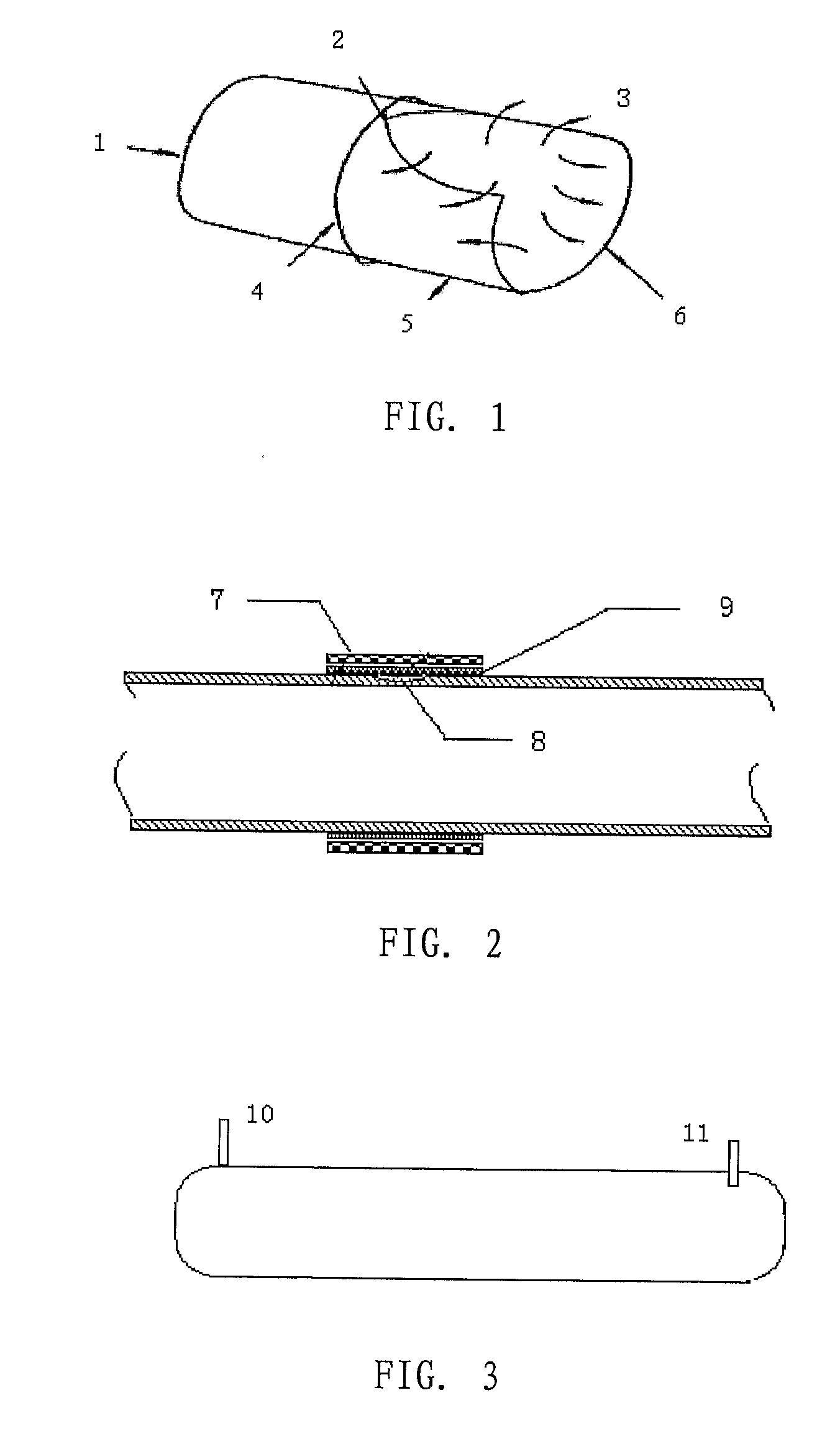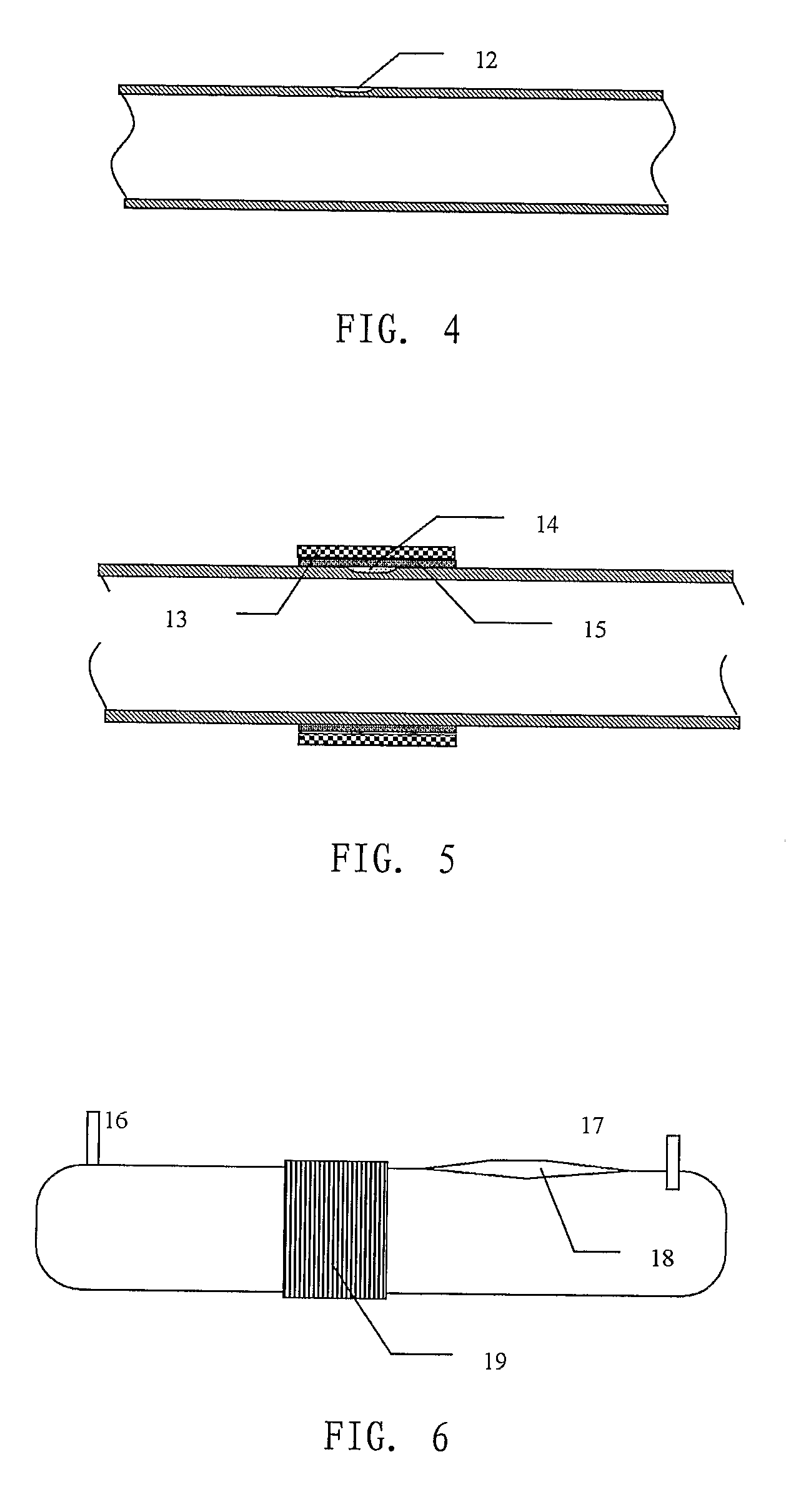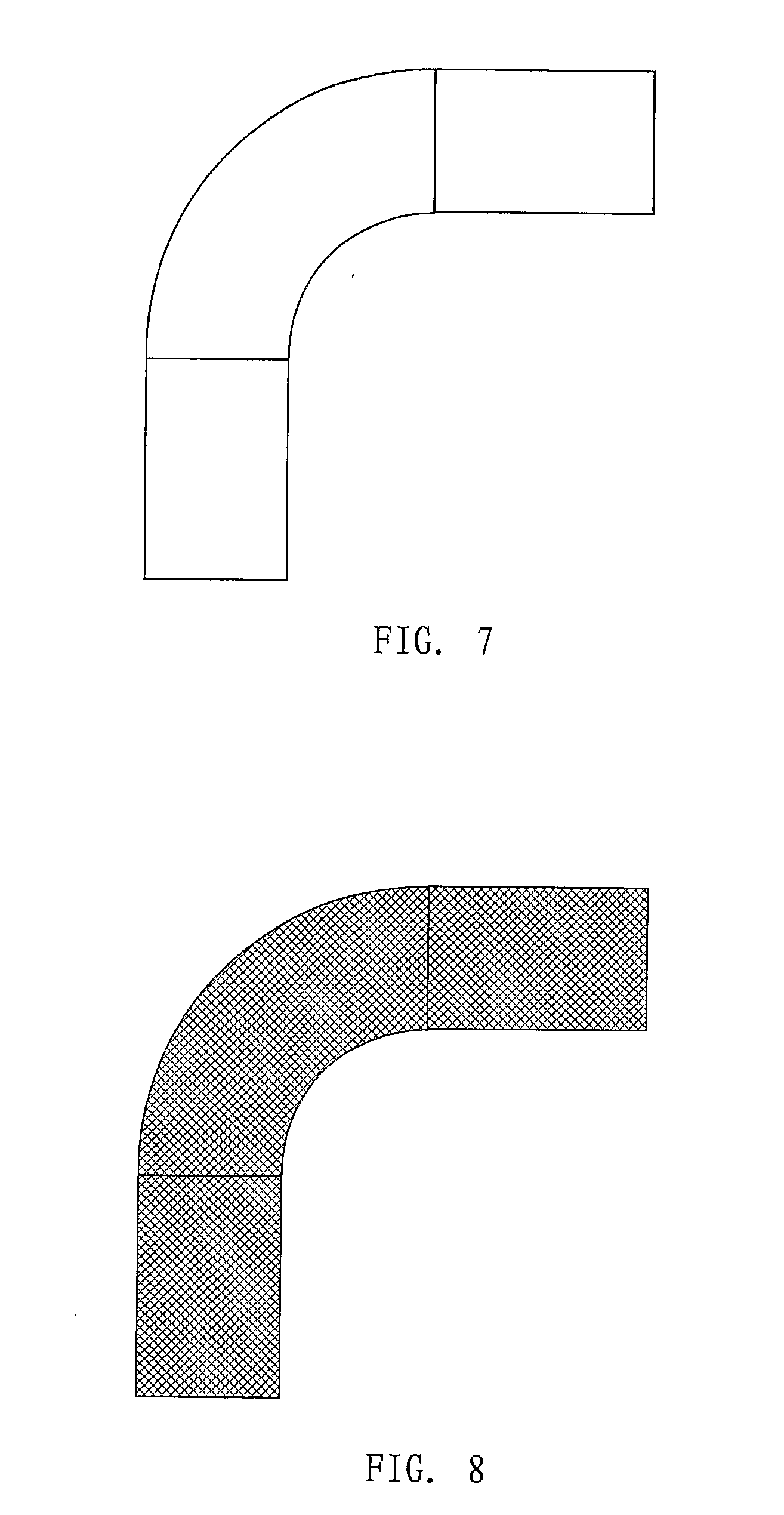Technique for repairing, strengthening and crack arrest of pipe
a technology of crack arrest and pipe, which is applied in the direction of pipe elements, mechanical equipment, layered products, etc., can solve the problems of pipeline cracking, inability to raise the pressure as desired, and more than 60% of gas and oil pipelines in service in china come into an accident-prone period, etc., to achieve high strength, low cost, and high safety and reliability.
- Summary
- Abstract
- Description
- Claims
- Application Information
AI Technical Summary
Benefits of technology
Problems solved by technology
Method used
Image
Examples
example 1
The Insulating Property of the Composite Material Layer Obtained by Placing the Insulated Materials as its Base Layer
[0118]The insulating property of the pipe after being repaired by the insulated material as the base layer was measured. A φ60 mm steel pipe was used and repaired according to the following steps:
[0119]1) cleaning up the portion of the pipe to be repaired, so as to remove the anti-corrosion layer, rust and other dirts, and achieve a surface treatment quality of level St3 as stipulated in GB / T8923-1988;
[0120]2) filling up the defects with epoxy sand slurry filling material;
[0121]3) brushing the surface of the pipe with phenolic resin adhesive 2130 after the filling material was apparently dried, and then surrounding the pipe with unidirectional basalt fibers with a width of 300 mm, and rolling press to allow the unidirectional basalt fibers uniformly impregnated with the curable polymer, thereby obtaining a total of 2 layers after repeating the step once more;
[0122]4) ...
example 2
Evaluation of the Technical Solution According to the Invention with the Hydraulic Burst Test
[0125]In order to examine the effect of the technical solution according to the present invention, the possible sizes of defects present in oil or gas transportation pipelines with a steel pipe φ273 as an example is stimulated by using the hydraulic burst test. The pipe to be tested is shown in FIG. 3, and the defects on the pipe are schematically shown in FIG. 4. The test was proceeding with the following steps:
[0126]1) cutting a 3 meter-long pipe from common pipelines for oil or gas transportation (the pipe was a spiral welded pipe Q235 with a diameter of 273 mm and a wall thickness of 7 mm), with both ends sealed with sealers having a vent and an inlet (see FIG. 3);
[0127]2) creating a defect with a size of 40 mm×13.5 mm×3.5 mm;
[0128]3) cleaning up the portion of the pipe to be repaired, so as to remove the anti-corrosion layer, rust and other dirts, and achieve a surface treatment quality...
example 3
Evaluation of the Technical Solution According to the Invention with Hydraulic Burst Test
[0133]Similar to example 1, the composite materials were used to repair the defects in the spiral welding lines, and then the repairing effect was examined with the hydraulic burst test.
[0134]The testing procedure was described as follows:
[0135]1) cutting a 3 meter-long pipe from common pipelines for oil or gas transportation (the pipe was a spiral welded pipe Q235 with a diameter of 325 mm and a wall thickness of 7 mm), with both ends sealed with sealers having a vent and an inlet;
[0136]2) creating a defect with a size of 60 mm×10 mm×5.16 mm at the spiral welding line of the pipe;
[0137]3) treating the portion of the pipe to be repaired with degreasing and rust-removal;
[0138]4) filling up the defects with epoxy filling resins;
[0139]5) laying two layers of aramid (1414) fiber prepreg (a prepreg made from aramid fibers and epoxy resins) with a width of 500 mm on the surface of the pipe after the f...
PUM
| Property | Measurement | Unit |
|---|---|---|
| length | aaaaa | aaaaa |
| diameter | aaaaa | aaaaa |
| length | aaaaa | aaaaa |
Abstract
Description
Claims
Application Information
 Login to View More
Login to View More - R&D
- Intellectual Property
- Life Sciences
- Materials
- Tech Scout
- Unparalleled Data Quality
- Higher Quality Content
- 60% Fewer Hallucinations
Browse by: Latest US Patents, China's latest patents, Technical Efficacy Thesaurus, Application Domain, Technology Topic, Popular Technical Reports.
© 2025 PatSnap. All rights reserved.Legal|Privacy policy|Modern Slavery Act Transparency Statement|Sitemap|About US| Contact US: help@patsnap.com



